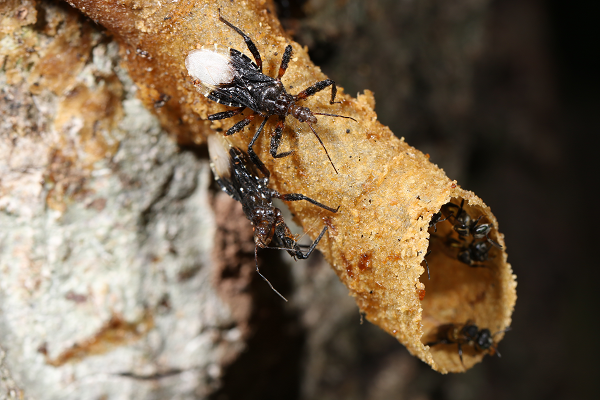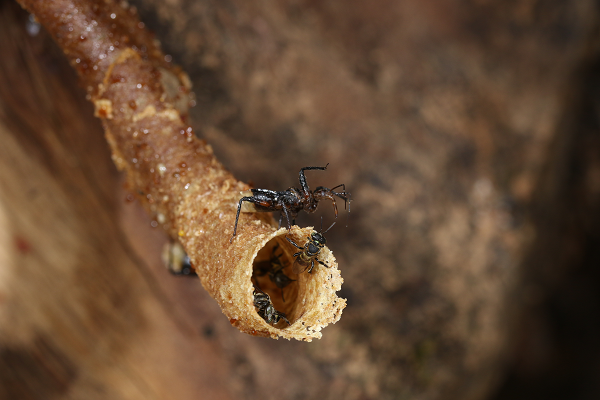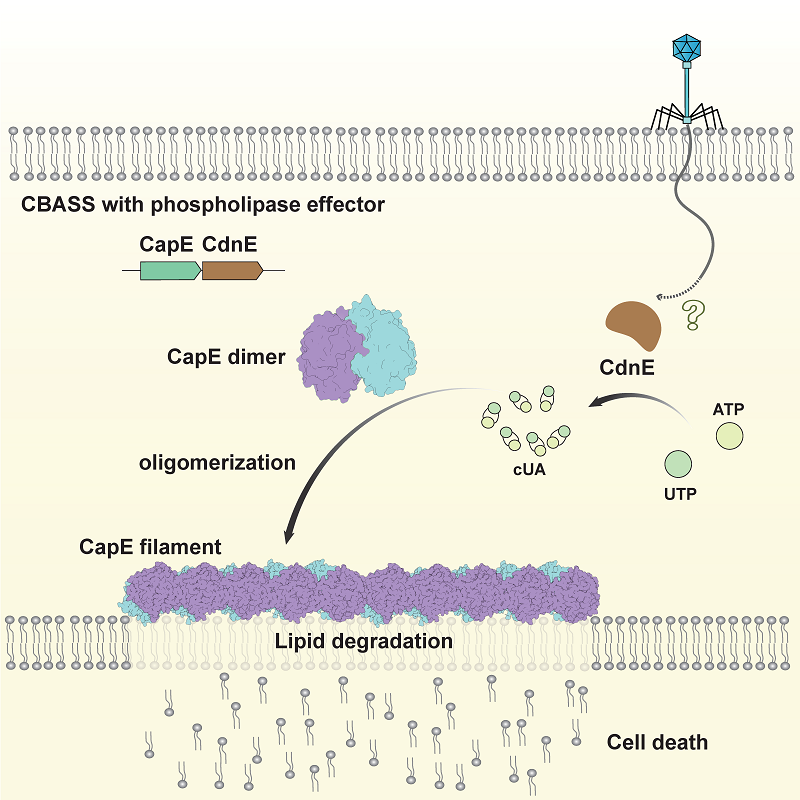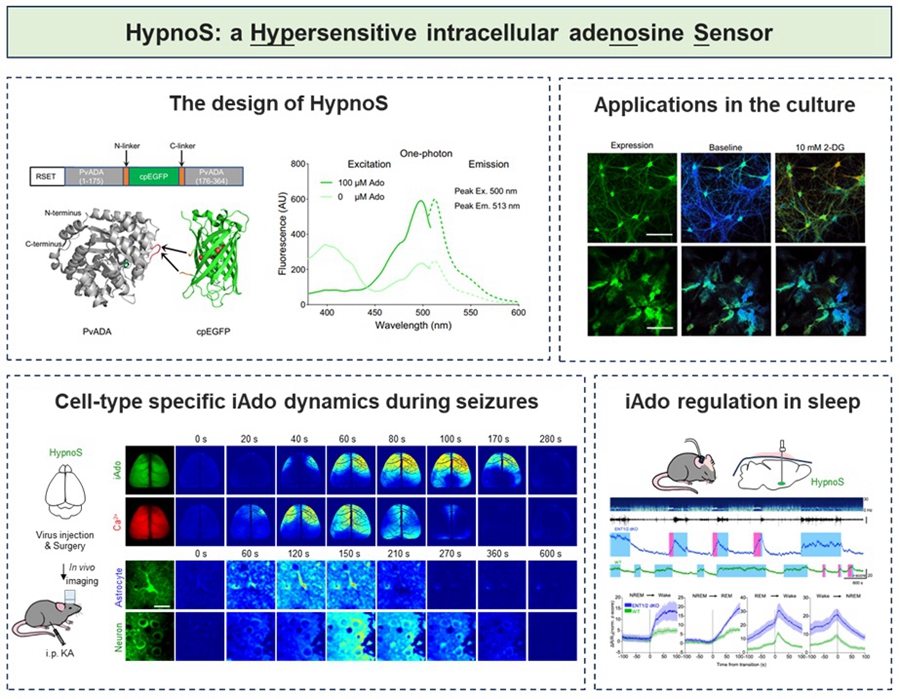2025-05-13 中国科学院(CAS)

The bug climbing onto the stingless bee nest tube. (Image by CHEN Zhaoyang)

The bug raises its fore legs at the entrance preparing to prey. (Image by CHEN Zhaoyang)
<関連情報>
- https://english.cas.cn/newsroom/research_news/life/202505/t20250513_1043490.shtml
- https://www.pnas.org/doi/10.1073/pnas.2422597122
アシナガバチの専門捕食者における道具の使用は獲物漁りを助ける Tool use aids prey-fishing in a specialist predator of stingless bees
Zhaoyang Chen, Li Tian, Jin Ge, +6 , and Hu Li
Proceedings of the National Academy of Sciences Published:May 12, 2025
DOI:https://doi.org/10.1073/pnas.2422597122
Significance
Tool use is a well-established behavior where external objects are manipulated by the tool user to modify the physical properties of another object for benefit. However, the functional mechanisms behind such behaviors remain underexplored. Here, we demonstrate that a stingless bee-specialist assassin bug employs its prey’s defensive resin as a hunting tool. By manipulating the resin, the predator amplifies chemical cues that stimulate colony defense, facilitating hunting by luring attacking bees to the predator’s optimal hunting position. This finding provides comprehensive empirical evidence of tool use in an invertebrate predator interacting with its social prey. Our findings offer insights into the adaptive function and mechanisms of tool use and highlight the role of dietary specialization in shaping such behaviors.
Abstract
Tool use is widely reported across a broad range of the animal kingdom, yet comprehensive empirical tests of its function and evolutionary drivers remain scarce, predominantly focused on a few relatively intelligent vertebrate lineages. In this study, we provide a comprehensive examination of tool use behavior in the assassin bug Pahabengkakia piliceps, a specialist predator of stingless bees that exploits resin droplet from bee nest entrance to facilitate hunting. Field behavioral experiments demonstrated that resin use is critical for hunting success, as the predator uses resin to stimulate the colonial defense of stingless bees, luring attacking bees toward its optimal hunting position. Chemical analysis revealed that resin processing by the assassin bug enhances the emission of volatile compounds, making the resin more attractive and stimulating to guard bees. Through these experiments, we empirically demonstrate how an invertebrate predator adapts to the colony defense of social insects via tool use behavior. We further propose that complex tool use can evolve under selective pressures driven by diet specialization. Our findings offer a new model for studying the adaptive functions and underlying mechanisms of tool use behaviors in animals.


